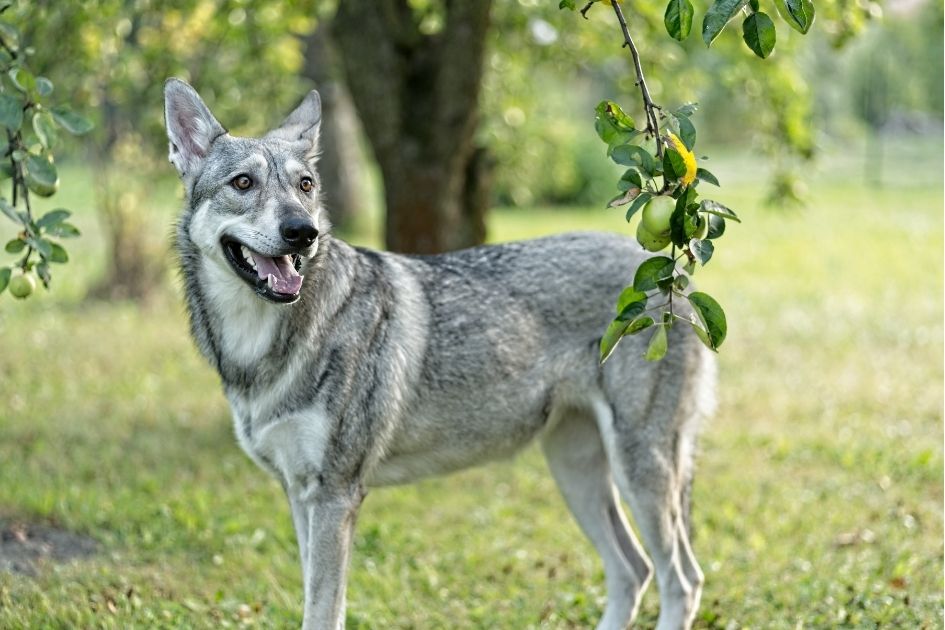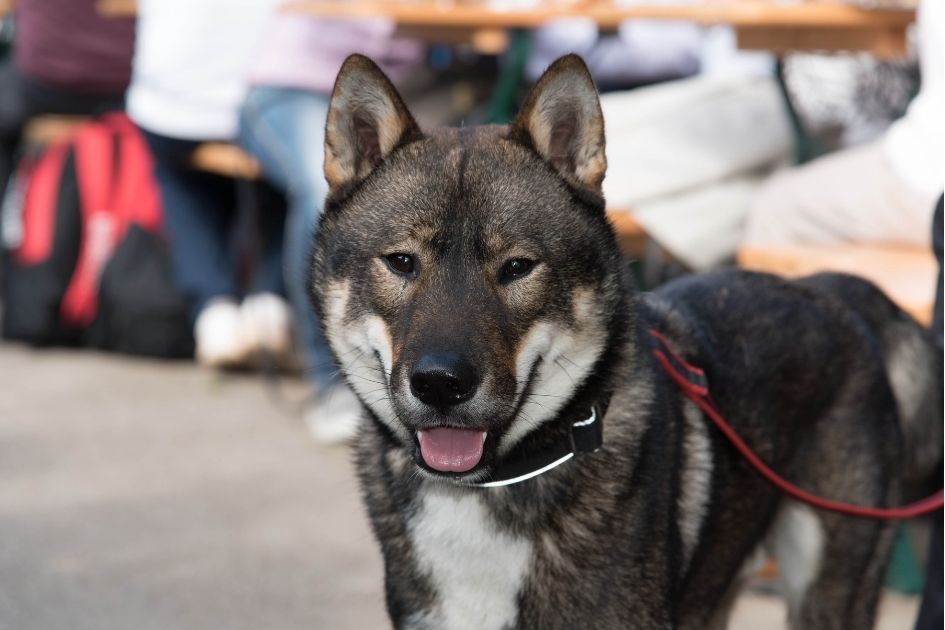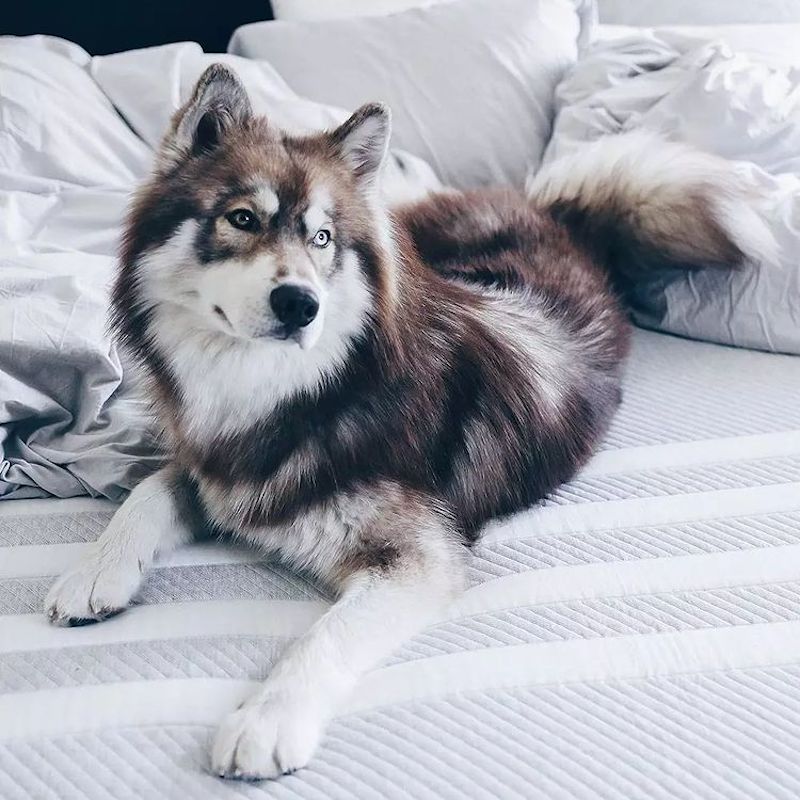Are you wondering if there’s a dog that looks like a Coyote? Don’t worry; you’re in the right place.
Having a dog as a pet could be a great idea, but some of them could be wild and untamable—owning one is a huge responsibility.
Coyotes are wild dogs that look pretty similar to wolves—they are members of the dog family.
The crossbreed of a coyote and a wolf (or dog) brings forth a coydog. Coyotes are now found across the United States and Canada.
If you are curious about the dogs that look like coyotes, or you plan on purchasing one for yourself, or you just want to know how to differentiate a dog from a coyote, then you’re just about to gain the needed information.
For some of these dog breeds, their resemblance is as if they are direct descendants of the Coyote.
Who knows, you may find your next pooch on this list.
Top 10 Dogs that Look Like Coyotes but Aren’t
1. Czechoslovakian Wolfdog

- Lifespan: 12–16 years
- Weight: 57–66 pounds
- Height: 24–26 inches
- Country of Origin: Czech Republic
Also known as the Czech Wolfdog, this breed came into existence in the 19th century but became recognized as a national breed in 1982 and by the FCI in 1989.
They are offspring of the crossbreeding of a Carpathian Wolf and a German Shepherd Dog. It is a tall thin creature with short hair.
Czech Wolfdog is most times always hyperactive and plays around in large areas.
However, they make great pets. They are also fast and fearless.
2. Kugsha

- Lifespan: 14–16 years
- Weight: 60–10 pounds
- Height: 20–27 inches
- Country of Origin: United States
Also known as Amerindian Malamute or American Husky, Kugsha dogs are not recognized by any national or international kennel club.
The Kugsha dog has a huge head and looks more like a wolf than a coyote. They often serve as work or security dogs.
Also, they are very smart and friendly if trained from an early age. However, training them could be quite difficult, but they are very understanding and loyal.
This dog breed is used as a worker because of its intelligence, size, strength, intimidating looks, and high temperament.
However, they can get destructive if separated from the families they shared strong bonds with.
3. Saarloos Wolfdog

- Lifespan: 10–12 years
- Weight: 66–90 pounds
- Height: 24–30 inches
- Country of Origin: Netherlands
The Saarloos Wolfdog is originally from the crossing between a Eurasian Wolf and German Shephard and was recognized by the FCI in 1981.
They have peculiar traits as those of the Gray Wolf, which makes them wild if not properly tamed.
These dogs have a wedge-shaped head, large ears, long faces, and legs with yellow almond-shaped eyes. They are self-standing and energetic.
Saarloos Wolfdogs are great companions and have a simple temperament but can sometimes be very stubborn.
They also have a short and thick double coat that resembles that of a wolf.
4. Shikoku Dog

- Lifespan: 10–12 years
- Weight: 35–55 pounds
- Height: 17–22 inches
- Country of Origin: Japan
Also known as “Kochi-ken” or “Mikawa Inu,” Shikoku Ken Dog breeds are mainly found on Shikoku Island.
They have multiple colors on their coat, a long face, pointed nose, and a curly tail that resembles a Coyote.
Some Shikokus have a thick red double coat, while others are black.
They are ingenious, active, and playful but a bit wary.
The Shikoku Ken prefers to be alone or around other adult dogs because they have a high sensitivity level but could become very loyal in the long run if well-trained.
5. Siberian Husky

- Lifespan: 12–15 years
- Weight: 35–60 pounds
- Height: 20–24 inches
- Country of Origin: Siberia
The Siberian Husky is a born sled dog with a thick fine double coat and various standard colors.
These iconic pack dogs are athletic and love exercising and playing in large spaces.
Huskies are easy to groom and train but have a large appetite, and they tend to be obese if you’re not careful with their feeding.
These dog breeds are awe-inspiring, energetic, gentle, and thrive well in cold climates.
Because of their intelligence, Siberian Huskies can easily become escape artists when they’re bored or restless. They hate being restrained and could run off out of curiosity if not looked after.
This trait is what causes them to demand love and attention always.
6. Tamaskan Dog

- Lifespan: 14–15 years
- Weight: 50–99 pounds
- Height: 24–28 inches
- Country of Origin: Finland
Tamaskan dogs are a rare breed with a wolf-like resemblance. They are super talented when it comes to dog sports and athletics.
They are also intelligent, strong, sociable, tolerant, agile, and loyal to their owners.
Owning a Tamaskan dog requires that you devote enough time to caring for it, showing it love, and giving it all the attention it needs.
It is wild-looking, has a powerful and strong working ability, as well as a large appetite for food.
They sometimes get stubborn if not consistently and firmly trained. In extreme cases, they become wild and dangerous.
7. Utonagan

- Lifespan: 12–15 years
- Weight: 55–110 pounds
- Height: 23–30 inches
- Country of Origin: England
With a similar facial structure to that of a coyote, the Utonagan is a crossbreed of the Siberian Husky, German Shepherd, Alaskan Malamute, and five other breeds that are not known.
They are originally known as the Wolf Dog. Owning a Utonagan requires one to have prior knowledge and skills on how to train dogs.
They have varied shades and colors with chunky bodies. They are intelligent, friendly, require lots of exercise, and they make excellent companions.
Also, they prefer cold climates and large spaces where they can play and exercise freely.
They are very loyal to their owners.
8. Canadian Eskimo dog

- Lifespan: 10–15 years
- Weight: 60–105 pounds
- Height: 20–37 inches
- Country of Origin: Canada
Also referred to as the Canadian Inuit Dog, the Canadian Eskimo Dogs were bred over 4,000 years ago for pulling sleds and hunting.
They are recognized by the Canadian Kennel Club and the FCI.
Canadian Eskimo dogs have a huge statue, tiny and pointed ears, bushy curly tails, and blue eyes. Their coats are either black, grey, black, brown, or a mixture of these colors.
They attain full maturity at three years of age.
These dogs are very intelligent breeds, and they exert a high level of strength.
9. Italian Wolf

- Lifespan: 14–16 years
- Weight: 60–90 pounds
- Height: 23–28 inches
- Country of Origin: Italy
Also known as Lupo Italiano or Cane Toccatore, the Italian Wolf is a result of the crossbreeding of a male German Shepherd with a female Apennine Wolf.
They have a strong and tucked-in abdomen, strong body and limbs, small heavy tail, and ardent senses.
They are intelligent, strong, and lively. However, they are banned in certain countries because they exhibit unpredictable and wild behaviors most time.
Nevertheless, they are the perfect dog breeds for work, search and rescue missions.
10. Samoyed

- Weight: 35–65 pounds
- Lifespan: 12–14 years
- Height: 19–24 inches
- Country of Origin: Northwest Russia, Western Siberia
The Samoyed is a cute spitz-size working dog of the arctic with a thick and double-layer white coat.
Samoyeds had one of the best smiles we’ve seen in canines. They are easy-going, trainable, and highly intelligent dogs.
They detest being confined to a particular environment and could begin to act wild and stubborn. Samoyeds tend to dig and become really destructive when they get bored.
This is why they thrive better in a secured large open space.
Related: 15 Dogs Breeds With High Prey Drive
Are Coydogs Illegal?
Coydogs are a hybrid of domesticated dogs with Coyotes, which are generally related to wolves. Hence, Some states may technically deem them as wildlife. In some states, it may be illegal to breed, sell, or own a Coydog.
It is necessary to know the laws of your state regarding wildlife.
How Do You Tell If It’s a Dog or Coyote?
The most noticeable difference between dogs and coyotes is their body structure.
A Coyote has a more pointy nose, longer ears, shorter legs, and a lithe body, while dogs have longer legs, deeper chests, and are fatter.
Coyotes have thin and long-shaped paws, while a dog’s paws are short. Also, Dogs have larger and thicker coats than coyotes.
Do Coydogs Make Good Pets?
There is no doubt that coydogs are beautiful creatures. However, some of them could be wild and dangerous without consistent training.
Coydogs are not a good choice of pets for those who do not know how to manage, train, and tame these canines.
Is a Coyote Just a Wild Dog?
Since coyotes are members of the dog family, they possess the traits of dogs. However, some of them are offspring of wolves and are wild, but can be termed.
Many people have been breeding the coyote-dog hybrids more than the coyote-wolf hybrids. Nevertheless, they can still be unpredictable and dangerous.
Is a Coyote a Wolf?
While Coyotes may look similar to wolves, they are more chunky and slightly smaller than wolves. Also, they have bigger ears and skulls compared to their body.
Wolves hold down their tail while running, whereas Coyotes keep their tail down. Moreso, the predator behavior of the wolves is way higher than that of Coyotes.
Final Thoughts
Hopefully, you found our list of Coyote dog lookalikes helpful.
Coyotes are very cute and attractive animals. They can be trained to exert a more friendly behavior and comportment towards humans and family.
If you’re considering picking one as a pet, be sure to train it properly and provide a good space for it to play and exercise. This keeps them more comfortable and easy-going.
At this point, we call it a wrap and wish you an exciting experience with these cute dogs that look like Coyotes but aren’t.
You May Also Like:







